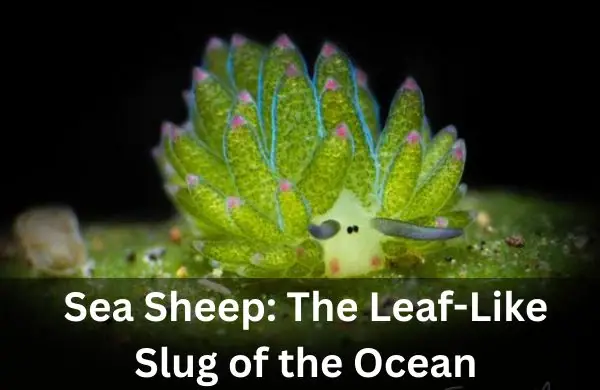Albino Monkeys: Nature’s Rare Gems and Their Struggle for Survival

Albino monkeys are a fascinating and rare phenomenon within the primate world. These unique creatures captivate our attention due to their distinctive appearance and the challenges they face in their environment. In this blog post, we will delve into the world of albino monkeys, exploring their characteristics, the difficulties they encounter, and the conservation efforts dedicated to their preservation.
A hereditary disorder known as albinism affects the pigmentation of an organism’s skin, hair, and eyes and prevents the formation of melanin. Monkeys born with albinism exhibit strikingly light or white fur, and pale skin, and often have red or pink eyes. This distinctive appearance sets them apart from their non-albino counterparts and adds to their allure.
The purpose of this blog post is to shed light on albino monkeys and provide a deeper understanding of their lives. We will explore the challenges they face in the wild, such as increased vulnerability to predators and sun sensitivity. Additionally, we will examine the implications of albinism on their social interactions, reproduction, and genetic diversity.
Understanding Albino Monkeys
Albinism is a genetic condition that affects the production of melanin, the pigment responsible for the coloration of skin, hair, and eyes. Albino monkeys, like other albino animals, lack melanin, resulting in their distinct appearance. Understanding the characteristics and traits of albino monkey can provide valuable insight into their lives and the challenges they face.
.
Explanation of albinism and its causes
How albino monkeys differ from their non-albino counterparts
- Fur and skin: Albino monkeys have white or light-colored fur, which stands out in comparison to the dark or vibrant colors of non-albino monkeys.
- Eye color: Due to the lack of pigmentation, albino monkeys typically have pink or red eyes, as the blood vessels in the eyes become more visible.
- Sensitivity to light: Albino monkeys often exhibit increased sensitivity to sunlight and bright light due to the absence of melanin, which acts as a natural protection against harmful UV rays.
- Visual impairment: The reduction or absence of melanin in the eyes can cause visual impairments such as nearsightedness, farsightedness, or poor depth perception.
Common traits and physical characteristics of Albino monkeys
1. White or light-colored fur: Albino monkeys have fur that appears white or pale, lacking the typical pigmentation of their species.
2. Pale skin: The skin of albino monkeys is lighter in color compared to their non-albino counterparts.
3. Pink or red eyes: The lack of pigmentation in the eyes results in the visibility of blood vessels, giving the eyes a pink or red appearance.
4. Light sensitivity: Albino monkeys often exhibit sensitivity to sunlight and bright light due to the absence of melanin, necessitating measures to protect their eyes and skin.
Understanding the unique characteristics of albino monkeys helps us appreciate their distinctiveness and the challenges they encounter. In the following sections, we will delve deeper into the specific challenges faced by these remarkable creatures in their natural habitats and explore the implications of albinism on their lives.
.
Challenges Faced by Albino Monkeys
Albino monkeys, like other albino animals, face several challenges and difficulties in their natural habitats. Here are some of the common challenges faced by albino monkeys:
1. Predation
Albino monkeys are more vulnerable to predation compared to their pigmented counterparts. Their lack of pigmentation makes them more visible and easier targets for predators, as they stand out against their surroundings. This puts them at a higher risk of being hunted or attacked by predators such as birds of prey, large cats, or other predators in their ecosystem.

2. Sunlight sensitivity
Albino monkeys lack the pigment melanin, which provides protection against harmful ultraviolet (UV) radiation from the sun. They are therefore more prone to skin damage, sunburns, and other related problems. Long-term sun exposure can result in serious sunburns, skin cancer, and eye issues including cataracts or photophobia.
3. Visual impairment
Due to the absence or reduced amount of melanin in their eyes, albino monkeys often experience visual impairments. They may have reduced visual acuity, poor depth perception, and sensitivity to bright light. Their vision may be compromised, affecting their ability to locate food, recognize predators, or navigate their environment effectively.
4. Camouflage and concealment
The lack of pigmentation makes it challenging for albino monkeys to blend into their surroundings and remain hidden from predators or other threats. Natural pigmentation in animals often serves as a form of camouflage, allowing them to better blend into their environment and evade detection. Albino monkeys, lacking this advantage, may struggle to conceal themselves and may be more easily targeted by predators.
5. Social challenges
In some primate species, individuals with different physical appearances or characteristics can face social challenges within their groups. Albino monkeys may be ostracized or face discrimination from their pigmented counterparts, which could impact their access to resources, mating opportunities, or overall social integration within the group.
6. Health issues
Albino monkeys can also face certain health issues associated with their genetic condition. Besides visual impairments and increased susceptibility to sunburns, they may experience other genetic or developmental abnormalities, such as hearing impairments or compromised immune systems. These health challenges can further impact their survival and overall well-being.
.
Human Interaction with Albino Monkeys
Albino monkey, like any other primates, have a complex social structure and are highly interactive with their environment and fellow primates. However, their albino condition, characterized by a lack of pigmentation in their skin, hair, and eyes, may introduce certain considerations when it comes to human interaction. It is crucial to approach these interactions with sensitivity, respect, and a deep understanding of the needs and vulnerabilities of these unique animals.
Prioritizing the welfare and well-being of albino monkeys should always come first when interacting with them. These primates may be more susceptible to sunburns and other skin-related issues because of their melanin deficit. Therefore, providing them with shaded areas or access to indoor enclosures with appropriate lighting is essential. Additionally, albino monkeys may have compromised vision, as their lack of pigmentation affects their eye structure. As such, interactions should be carried out in well-lit environments that accommodate their visual impairments.
Secondly, human interaction with albino monkey should be limited to experienced individuals who have received proper training and have a thorough understanding of primate behavior. These individuals should respect the natural instincts and behaviors of these animals, allowing them to initiate or decline interactions as they see fit. Approaching these monkeys slowly and calmly, using non-threatening body language, can help establish trust and reduce stress. Primate species, especially albino monkeys, should be treated as wild creatures in order to protect their physical and psychological well-being.
Lastly, interaction with albino monkeys should focus on providing enrichment activities that mimic their natural behaviors. This can include the provision of toys, puzzles, and social interactions with their fellow primates, as they are highly social animals. It is crucial to avoid any activities that could cause stress, harm, or disruption to their natural behaviors and habitats. To make sure kids are thriving in their surroundings, it is essential to regularly observe and evaluate their physical and mental health.
.
Conservation of Albino Monkeys
The conservation of albino monkeys is crucial to ensure their survival and maintain biodiversity. Here are some key aspects to consider in the conservation efforts for albino monkeys…
1. Research and Monitoring
Conducting research and monitoring programs to gather information about the population size, distribution, behavior, and ecology of albino monkeys is essential. This data can help in understanding their specific conservation needs and developing effective conservation strategies.
2. Habitat Protection
Protecting the natural habitats of albino monkeys is crucial. This involves conserving forests, jungles, or any other habitats where they reside. Creating protected areas, national parks, and wildlife reserves can provide a safe haven for these monkeys and other endangered species.
3. Anti-Poaching Measures
Implementing and enforcing strict anti-poaching measures is vital to combat the illegal hunting and trading of this monkey. This includes increasing patrols, strengthening law enforcement, and raising awareness about the illegal wildlife trade to reduce demand for albino monkeys in the black market.
4. Education and Awareness
Educating local communities, stakeholders, and the general public about the importance of albino monkey conservation is essential. Increasing awareness about the ecological significance of these monkeys and the threats they face can foster a sense of responsibility and encourage conservation efforts.
5. Genetic Management
Albino monkeys often have genetic abnormalities that can affect their health and reproductive success. Genetic management programs can help preserve their genetic diversity and reduce the risk of inbreeding. Captive breeding programs, when appropriate and necessary, can also contribute to the conservation of albino monkeys.
6. International Cooperation
Collaborating with international organizations, conservation groups, and governments across borders is crucial for effective conservation efforts. Sharing knowledge, resources, and best practices can help enhance conservation initiatives and protect albino monkeys in their range countries.
7. Sustainable Development
Promoting sustainable development practices that take into account the needs of both human communities and wildlife can contribute to albino monkey conservation. Encouraging responsible tourism, supporting local livelihoods, and promoting alternative income sources can reduce the pressure on natural habitats and minimize human-wildlife conflicts.
8. Rehabilitation and Rescue
Establishing rehabilitation centers for injured, orphaned, or confiscated albino monkeys can provide necessary care and rehabilitation. These centers can also serve as educational facilities, raising awareness about the conservation challenges faced by albino monkeys.
By addressing these conservation aspects and implementing comprehensive strategies, we can enhance the chances of survival and well-being for albino monkeys, ensuring their place in the natural world for future generations.
.
Famous Albino Monkeys
Throughout history, several notable albino monkeys have left their mark, whether through their unique appearances, scientific contributions, or involvement in conservation efforts. These individuals have helped shed light on the world of albino monkeys and increased awareness about their significance. Here are some examples of famous albino monkeys:
Notable albino monkey species
Iconic albino monkey throughout history
.
Contributions of famous albino monkeys to research or conservation efforts
- Scientific research: Albino monkeys in research settings have provided valuable data for understanding the genetics, physiology, and behavior associated with albinism in primates. Their participation in studies has advanced scientific knowledge and contributed to the broader understanding of genetic conditions in animals.
- Conservation ambassadors: Famous albino monkeys, like Snowflake and Alba, have served as ambassadors for their species, raising awareness about the challenges faced by their wild counterparts and the importance of conservation efforts. Their visibility has helped generate support for conservation initiatives and prompted action to protect their habitats.
The fame and impact of these famous albino monkeys serve as a reminder of the uniqueness and fragility of albino primate populations. By recognizing their contributions and sharing their stories, we can continue to raise awareness and advocate for the conservation of monkey albino and their habitats.

Conclusion
Lastly, albino monkeys are captivating and unique creatures that face distinct challenges due to their genetic condition. Understanding the characteristics, challenges, and conservation efforts related to albino monkeys is crucial for their protection and the preservation of their populations. From increased vulnerability to predators and sun sensitivity to the implications for their social interactions and genetic diversity, these monkeys require special attention and conservation initiatives to ensure their survival.
Conservation efforts play a vital role in safeguarding albino monkeys and their habitats. Through habitat preservation, education, awareness programs, research and monitoring, and collaboration between organizations and communities, we can make a positive impact on their conservation. Responsible ownership and ethical considerations are also essential when it comes to human interaction with this monkey, ensuring their welfare and contributing to conservation efforts rather than perpetuating harm.
As individuals, we have the power to raise awareness, support reputable conservation organizations, and advocate for the protection of albino monkeys. We can help ensure these creatures’ long-term survival and promote a greater appreciation for the wonder and diversity of the natural world by understanding the relevance of these creatures, their difficulties, and the value of conservation. Together, let us champion the cause of albino monkey conservation and make a difference in securing a future where these remarkable creatures thrive.
Read Also:







